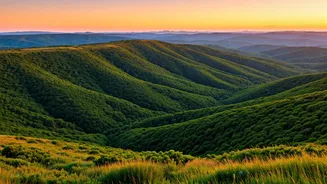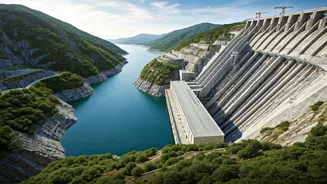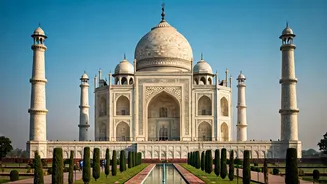Geographic Marvels
Mizoram, nestled in the northeastern corner of India, is predominantly mountainous. Its terrain is characterized by steep hills, deep gorges, and lush
valleys, forming a breathtaking landscape. The region's altitude varies significantly, with peaks reaching up to 2,157 meters above sea level, contributing to a diverse range of climates and ecosystems. These mountains are largely covered by dense forests, including various species of bamboo, which are integral to the local culture and economy. The state's drainage system is mainly shaped by rivers like the Chhimtuipui and Tlawng, which carve through the land, providing essential water resources and supporting local agricultural practices. This geographical layout not only shapes the physical appearance of the state but also influences the distribution of population and the lifestyle of the Mizos.
Cultural Heritage Unveiled
The Mizo people, who are the primary inhabitants of Mizoram, have a rich and distinctive cultural heritage. Historically, they were known for their village-based social structures, where communities were tightly knit and governed by chiefs. This tribal social organization has played a significant role in preserving their traditions, including their unique language, Mizo, and traditional practices. Music and dance are integral to Mizo culture; the 'Cheraw' dance, performed using bamboo staves, is one of the most famous, illustrating the artistic skills of the Mizo people. The vibrant festivals, such as 'Chapchar Kut,' celebrate community spirit and showcase their distinctive traditional clothing, local cuisine, and rituals. These customs are kept alive, adapting while honoring their history.
Economy and Livelihoods
The economy of Mizoram is significantly influenced by its agricultural sector. The majority of the population depends on farming for their livelihood, with the practice of 'Jhum' or shifting cultivation, a traditional method, playing a considerable role. Rice, maize, and various other crops are typically cultivated. Besides agriculture, forestry is also essential, given the large forest cover of the state. Bamboo resources are particularly important, as they support local industries and provide raw materials for construction, handicrafts, and various other uses. Tourism also contributes to the state’s economy, as Mizoram's stunning scenery and unique cultural attractions draw visitors. These varied economic activities help sustain and develop the diverse communities within Mizoram.
Challenges and Prospects
Mizoram faces numerous challenges, including infrastructure development issues due to its hilly terrain, leading to transportation and communication limitations. Economic growth is often hindered by the state's remote location and challenges in accessing markets. Environmental issues, like deforestation and unsustainable farming practices, pose threats to the region's ecology. However, Mizoram also has several prospects for development. The tourism sector has considerable potential, offering opportunities to boost the economy by attracting more visitors. Renewable energy projects, such as hydropower, could bring sustainable and eco-friendly development. Furthermore, the promotion of local handicrafts and products can help boost employment and cultural preservation, thereby driving a sustainable future for Mizoram.
Mizoram Today and Beyond
Modern Mizoram continues to evolve, integrating modern life while celebrating its unique culture. Education, healthcare, and infrastructure have improved significantly in recent years, advancing living standards. The state's strong civil society organizations actively participate in promoting social and environmental causes, highlighting the Mizo community's commitment to progress. The younger generation is playing a key role in the state's transformation, balancing tradition with modernity while striving for economic opportunities. As Mizoram looks towards the future, it is focused on maintaining its cultural identity, promoting sustainable development, and improving the quality of life for all its residents, continuing to captivate and inspire.









